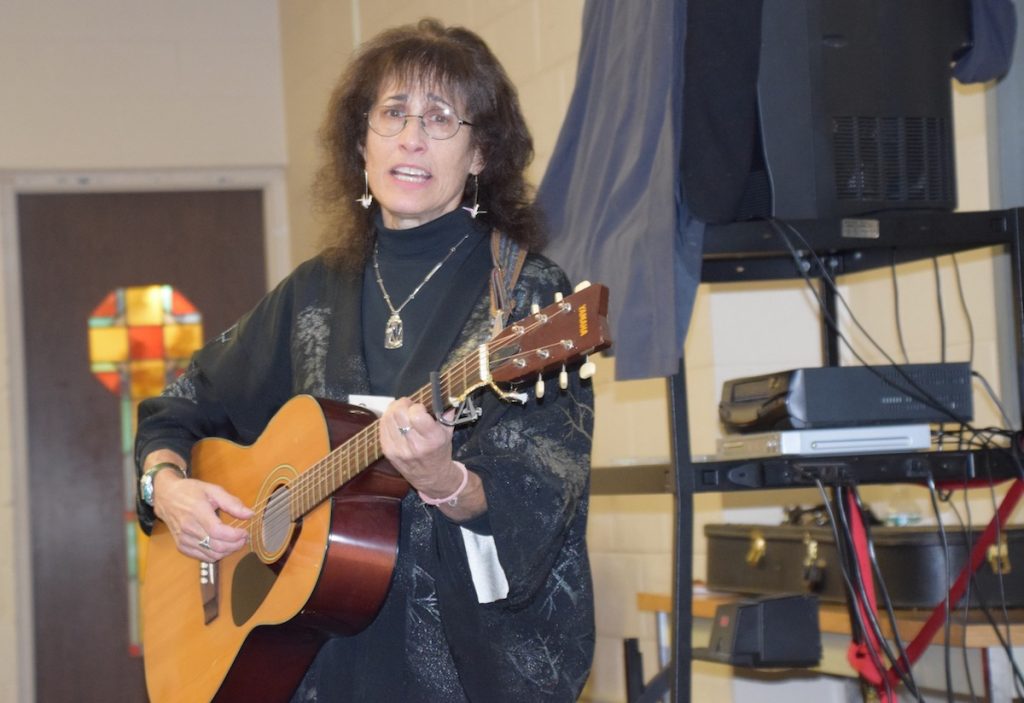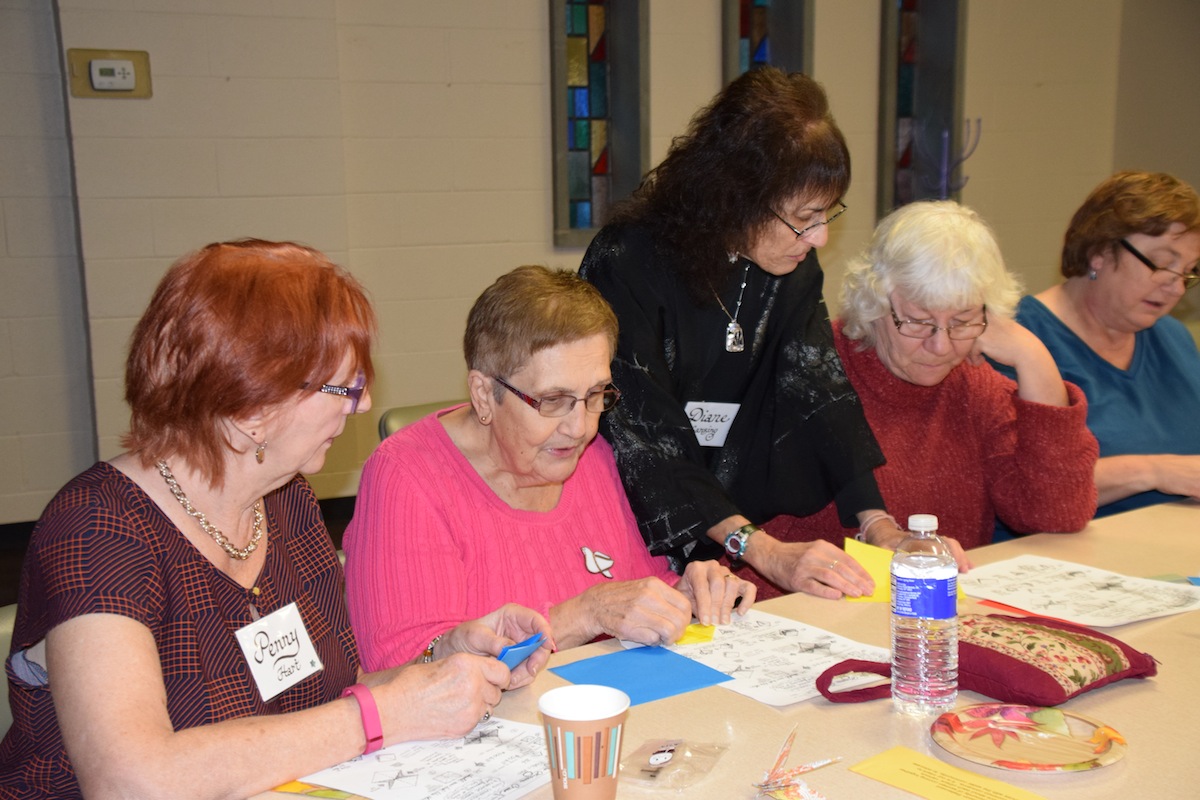Japanese music was playing as we entered; Japanese tea was offered along with a lovely assortment of refreshments as we gathered for a program on origami paper cranes as a symbol of peace in the aftermath of the Hiroshima bombing.
Our presenter, Diane Lansing, is a retired art teacher for Liverpool Central Schools who has a long involvement with the lovely origami cranes that have become a symbol for universal peace. Over 140,000 people were immediately killed in Hiroshima, although this number rose to 297,000 when those, like Sadako, who died from exposure to radiation are included. What is important about hearing Sadako’s story is that the tragedy becomes more palpable when one can put a human face on it, rather than an abstract number, however large.
This is very similar to what we are doing at WTB: by meeting face to face with others who have different “labels” from us, we begin to see beyond our differences to our shared humanity. By sharing our stories, we can see our similarities. Stories bring us together.
Diane was so moved by Sadako’s story that she began folding paper cranes herself; she has taught her students and many adults how to make them in many different settings. Diane carries origami cranes with her at all times and hands them out as a thank you for random acts of kindness given to her by strangers.
As you fold each crane you imbue it with a special wish. After the 2011 earthquake/tsunami in Japan, Diane made and sold “baby crane” earrings to raise money for the Japan Society’s Japanese Earthquake Relief Fund. She has been to Hiroshima three times—the last time in 2012 to hand deliver 2000 paper cranes. If WTB makes 1000 cranes, Diane promised to personally hand deliver and dedicate them in Hiroshima!

Accompanying herself on guitar, Diane sang the haunting song “I Come and Stand” based on a poem written in 1948 by Turkish poet Nazim Hikmet. The narrator is a child who has died in the Hiroshima bomb blast and who pleads: “All that I ask is that for peace/ You fight today, you fight today/ So that the children of this world/ May live and grow and laugh and play.” This moving song is what catalyzed Diane’s involvement with the Hiroshima aftermath and the paper cranes.
We then watched a video “Sadako and the Thousand Paper Cranes.” Briefly, Sadako was two years old when the atomic bomb dropped on Hiroshima August 6, 1945. Ten years later she developed leukemia, “the atomic bomb disease.” The Japanese have a legend that the crane lives for 1000 years, and whoever folds 1000 paper cranes will be granted a wish. While Sadako was in the hospital she folded 1300 paper cranes, folding in each her desire to get well. Sadly, Sadako died at age 12; her classmates and school children from 3200 schools in Japan raised the money to build the Children’s Peace Monument to honor her and all the children who died as a result of the atomic bomb. A statue of Sadako holding a crane above her head stands in Hiroshima Peace Park; the inscription reads: “This is our cry. This is our prayer. For building peace in the world.” Thousands of paper cranes are displayed near the monument.
Now it was time to learn to fold origami cranes ourselves. Diane passed out square pieces of origami paper, model cranes, and pamphlets with directions for folding origami cranes.
As supplies were being passed out, Sue Savion congratulated Joan Burstyn, WTB Advisory Board member, who are recently honored by Art Rage Gallery for her lifetime achievements and activism. Joan expressed her concern about the danger of nuclear war today in the face of the North Korean situation.
Diane walked us step by step through the 26-step process of making our own paper crane. She said the three most important things to remember about folding paper cranes are: the paper must be perfectly square, make precise folds, and make very firm creases. Making the cranes was really fun for everyone and challenging for some of us. We collaborated, each helping her neighbor; Diane tried to get to everyone whose crane folds were askew and assist them. At the end of the meeting, we each had made an origami crane imbued with our special wish for peace.
Anyone who would like to practice making canes can watch http://origami.org.uk/origamicrane.

